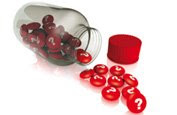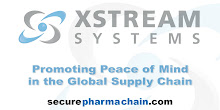
So consumers want to know about the H1N1 influenza A (otherwise known as Swine Flu) and what does it mean to them? Is it all hype or is this something they should worry about? Well…the best answer is to stay informed, be cautious and be prepared.
Authorities agree that this strain of H1N1 Flu should not be dismissed as a threat just because it has started off as mild cases. This particular flu is genetically a descendant of the Spanish flu of 1918, which started mild, but returned to infect two-thirds of the population and kill over 50 million people. Scientists believe that the current flu will return at the peak of flu season this fall and it will be a stronger more viable foe than the one that stands before us today.
The H1N1 Flu currently has around 6500 confirmed cases in 33 countries globally, of which about 3,400 are in the United States. As to date, most deaths due to this strain have occurred in Mexico. The United States has three confirmed deaths, but those individuals also had underlying health issues that contributed to a more severe case that required hospitalization.
So what about natural immunization? There is very little natural immunity to this strain. There is a possibility that individuals who are in their 90’s and above would be immune since they were most likely exposed to the Spanish Flu. However, the rest of us are probably out of luck.
So what about immunization shots? There are several pharmaceutical companies working on these shots to be delivered in the fall. The problem is that vaccines are developed in hen eggs and take about 4 months for completion. It is unlikely that a mass immunization of the population is feasible and will probably be restricted to those most vulnerable.
So what about medication treatment for those with the flu? This is where the real danger is and consumers need to be cautious. When demand exceeds supply, unscrupulous individuals take advantage of the public. No country has enough flu medication to serve its entire population. Some areas such as UK have enough to accommodate around 80% of their population. This is rare as most do not have enough to cover 50%. Some areas such as California only have enough to cover around 25% of their population.
Beware! Already the public is being spammed with individuals trying to sell Tamiflu over the internet only to steal their credit card information. Expect to see some cases of counterfeit Tamiflu as this was the case when SARS became an issue a few years ago and resulted in counterfeit flu remedies infiltrating the marketplace.
So what can a consumer do to protect themselves? The H1N1 Flu travels the same way as other flues. If you don’t have the flu yet practice good hygiene (i.e. wash your hands frequently; always cover your mouth when you cough) to lessen the spread of the disease to yourself or others. If you think you have the flu, stay home. If you suspect the H1N1 flu see your doctor and get tested. Whatever you do, don’t order medication online except through a known pharmacy. You will need a prescription from your doctor and you should only buy medication through known sources!
For pharmaceutical wholesalers, test your inventories. Pharmacists trust you to give them safe efficient medication to supply the public. Forewarned is forearmed. Be prepared - Get your security procedures in place now to ensure you have the safest medication possible for your distribution chain.
Below are some helpful links for information on the H1N1 Flu:
 Illinois State’s House and Senate recently passed an anti-counterfeiting bill (SB 1631) which strengthens penalties for those possessing, selling, marketing and transporting counterfeit goods. The bill was a collaborative effort between Senate Majority Whip Ira Silverstein, House Deputy Majority Leader Lou Lang, the U.S. Chamber, the Illinois Chamber of Commerce, the International Anti-Counterfeiting Coalition (IACC), and the International Trademark Association (INTA).
Illinois State’s House and Senate recently passed an anti-counterfeiting bill (SB 1631) which strengthens penalties for those possessing, selling, marketing and transporting counterfeit goods. The bill was a collaborative effort between Senate Majority Whip Ira Silverstein, House Deputy Majority Leader Lou Lang, the U.S. Chamber, the Illinois Chamber of Commerce, the International Anti-Counterfeiting Coalition (IACC), and the International Trademark Association (INTA).

















